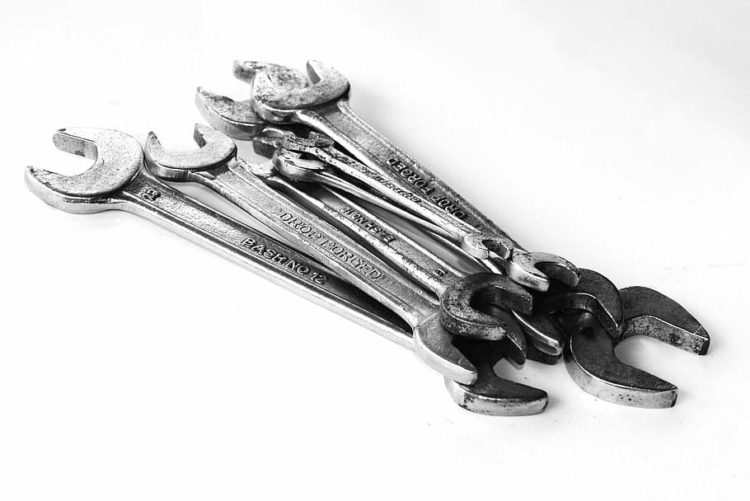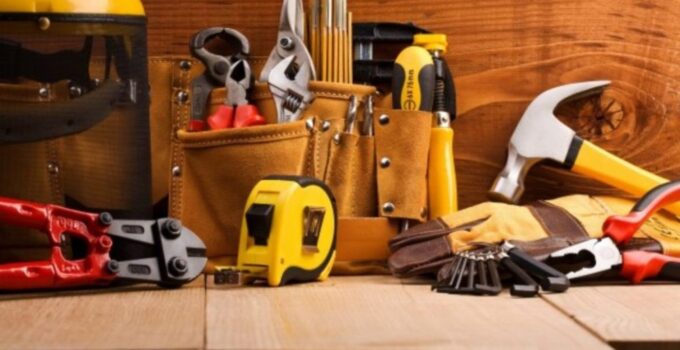We all have a screwdriver, a couple of nails and a wrench somewhere in some corner of the house. But do we really know what are the fundamental utensils that we always need to have available, just in case? Not really. People mostly either have tools to spare and a bunch of them that they won’t even use ever (especially men!), or they’re absolutely uninterested in dealing with all that.
Regardless of the type to which you belong, it can’t be denied that a well-equipped toolbox with some good content is almost a home insurance. It can certainly help us maintain our home and therefore extend the life of many devices or things within it. From hanging paintings or curtains to assembling furniture or making important improvements in the bathroom or kitchen, there are a series of utensils needed.

source:pxfuel.com
In case you want to take good care of your household, there’s nothing bad in investing a certain amount of cash in a couple of quality home instruments – you don’t need to wait for something to go wrong with your installations or any part of your home to need a repair.
One by one, nail by nail, and you’ll get a brand new, interesting and full toolbox which will basically last forever in case you’re careful enough. So, just in order to rush into absurd purchases by getting some utensils you’ll never take out of the box, or investments in poor quality things, we’re giving you the basics of the toolbox in any home.
Page Contents
Start with a toolbox

source:pxfuel.com
First of all – a toolbox. A place where all your fundamental parts of equipment will be kept safe. It’s necessary to purchase or even make one for yourself, as sometimes you’ll need to move your instruments from one place to another or transport it. Therefore, ensure that you find a suitable bag or box to carry your things around when necessary.
Its objective is also to be practical, so choose a convenient size that allows you to keep what is essential in it, without accumulate loads of useless things inside it. By doing that, the container loses its practicality and portability. There’s also plenty of space for your nuts, bolts, nails and other smaller and undemanding accessories that are always welcome to have by your side.
Then include a set of screwdrivers…

source:pxfuel.com
Their key purpose would be to place and remove screws, but they’re also used to perform all kinds of repairs, as we never know when we’re going to have to adjust or disassemble something from the house. In case you’re able to put aside more money, it’s not a bad idea to buy a whole set of screwdrivers with different tips – flat, torx, star and so on. But the most common ones are definitely the flat and the cross one, as most nails have that kind of groove.
… and of course, a hammer

source:pxfuel.com
Absolutely no toolbox would be complete without a solid and quality hammer. A good one should consist of a handle made of metal, possibly with a rubber lining, or a synthetical one – it shouldn’t be made of wood as in such case it won’t resist or withstand intensive strikes.
Ideally, the head should be divided into two parts – a flat, solid one and a so-called claw, with sharp ends that serves to remove tips, screws, fittings, bolts or other tiny elements. The larger hammers support more force and have more resistance, while the smaller ones are comfortable to use with smaller accessories and parts.
Pliers…

source:pxfuel.com
Pliers are one of the most popular hand utensils and they have many variations – universal ones, wire strippers, needle-nose pliers, cutting pliers, crimping pliers… and many more models. We believe that the universal type seems to be the most recommended as one of the basic instruments thanks to its ability to perform the functions of various above-mentioned pliers at the same time.
Therefore, if you’re still thinking about buying other types of this instrument, don’t worry, you can go with this one in the beginning – it will be enough. Also, if you’re planning to take care of some electrical repairments by yourself, it’s a must to opt for pliers with handles covered by insulating material, in order to make sure it’s safe for use in such conditions.
…a drill press…

source:pxfuel.com
You might not need this one every day, but believe it or not, it’s a true treasure to have in your workroom. Although some types of drills are mostly a great help within regular house repairs, a drill press is most likely to be used by manufacturers or for DIY projects. Although primarily used for drilling holes, when used with the proper parts they can also perform a number of machining operations, such as reaming, tapping, bending, countersinking, and grinding. It’s a kind of fixed drill that can be mounted on a support, or screwed to the floor or a table.
The smallest models can also incorporate a magnetic base that holds the steel pieces to be drilled. This instrument is more serious than those little ones we’ve already mentioned and it needs a little bit more research for you to purchase a quality one. Here, CordlessDrillguide can be quite helpful, as they’re offering one of the best comparisons of different types available on the market – you’ll be able to see the prices, the speed, the size and the amperage of a couple of truly best ones ever made.
…an adjustable wrench…

source:pxfuel.com
A spanner or a wrench is a fairly popular tool, indispensable when it comes to preparing a basic toolbox. It is used to loosen or adjust the bolts and nuts, being very useful for small repairs or large remodeling. Screws come in various sizes, so in order to avoid having to use many instruments and wrenches, there’s always an option of using a single adjustable wrench to solve the problem.
In order not to depend on a complete set of wrenches, we can perform our works with this one, which can act as fixed wrenches of 10, 11 and up to 18. The wrench is by far one of the hardware tools. most used in DIY and can not be missed when buying workshop tools.
…and the rest of smaller goods

source:pxfuel.com
The tape measure and a good set of gloves to carry out works are also major accessories when it comes to making any small change or adjustment at home. You can also add a level with an air bubble to this list, as it helps ensure that the paintings, curtains, shelves and everything that needs to be attached to the wall is straight and well balanced. Don’t forget to add some tweezers, too: they are similar to pliers, but they have long and pointed jaws and they facilitate the repairs that include tiny parts.
The final thought? Yes – so many diverse instruments for so many diverse things. But guess what – there are hundreds more out there. You might not need all of them in order to maintain your house and devices, but you never know which one you could need. The best part about all this is a constant opportunity to expand your choice of tools – this will enable you to create an enviable collection for your own purposes.





